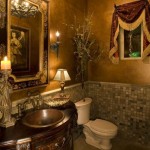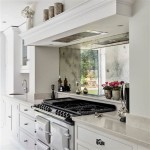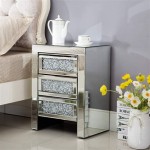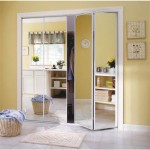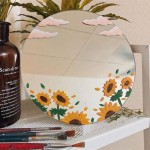See All Mirrors: Understanding Reflections and Their Applications
Mirrors, ubiquitous in daily life, serve much more than a superficial purpose. Their ability to reflect light allows for a wide array of applications, from personal grooming to complex scientific instruments. Understanding the properties of mirrors and how they manipulate light is crucial to appreciating their diverse functionality.
Key Properties of Mirrors
Mirrors operate on the principle of reflection. When light strikes a mirror's surface, it bounces back at an angle equal to the angle of incidence. This predictable behavior forms the basis for many optical systems. The quality of reflection depends significantly on the mirror's surface. Smooth, highly polished surfaces produce specular reflection, where the reflected light maintains its organization, creating a clear image. Rough surfaces scatter light in various directions, resulting in diffuse reflection, which doesn't produce a clear image.
Types of Mirrors
Mirrors are categorized based on their shape and reflective coating. The most common types include plane mirrors, which have a flat reflective surface, producing a virtual image of the same size and orientation as the object. Concave mirrors, with their inward-curving reflective surface, converge light rays, and can form either real or virtual images depending on the object's position. Convex mirrors, featuring an outward-curving reflective surface, diverge light rays and always produce virtual, diminished images. Specialized dielectric mirrors are designed to reflect specific wavelengths of light, often used in lasers and optical filters.
Mirrors in Daily Life
Mirrors are integral to everyday activities. From checking one's appearance to navigating roadways, their applications are numerous and often overlooked. Rearview mirrors in vehicles provide essential visual information for safe driving. Cosmetic mirrors facilitate personal grooming, while security mirrors offer enhanced visibility in shops and public spaces. Architectural applications of mirrors can enhance natural lighting and create illusions of spaciousness.
Mirrors in Science and Technology
Beyond everyday uses, mirrors play a crucial role in scientific instruments and advanced technologies. Reflecting telescopes use mirrors to gather and focus light from distant celestial objects, enabling astronomical observations. Microscopes often incorporate mirrors to direct light onto the specimen being examined. High-speed photography utilizes mirrors to capture rapid events, while laser systems rely on mirrors to control the path and amplification of light beams. Solar energy technologies utilize mirrors to concentrate sunlight for electricity generation or heating.
The Physics of Reflection
The law of reflection states that the angle of incidence is equal to the angle of reflection. This means the angle at which a light ray strikes a surface is the same angle at which it bounces off. This fundamental principle governs the behavior of light in all types of mirrors. The reflection process can be understood at a deeper level by considering the interaction of light as an electromagnetic wave with the electrons in the mirror's surface material.
Mirror Coatings and Reflectivity
The reflectivity of a mirror is determined by the material used for its coating. Traditional mirrors use a thin layer of silver or aluminum deposited on the back of a glass substrate. These metallic coatings provide high reflectivity across the visible spectrum. Specialized coatings, such as those used in dielectric mirrors, can be designed to reflect specific wavelengths or ranges of wavelengths, crucial for applications like laser technology and optical filters. The manufacturing process and environmental conditions can influence the longevity and performance of mirror coatings.
Illusions and Perceptions with Mirrors
Mirrors can create intriguing optical illusions and alter perceptions of space. Strategically placed mirrors can make a room appear larger or brighter. Mirror mazes exploit the principles of reflection to create disorienting and entertaining experiences. Artists have long utilized mirrors in their work to explore themes of reflection, perception, and identity. The ability of mirrors to manipulate light and create illusions adds depth and complexity to their function.
Care and Maintenance of Mirrors
Proper care and maintenance are essential for preserving the reflectivity and longevity of mirrors. Cleaning should be done with gentle, non-abrasive materials to avoid scratching the delicate reflective surface. Harsh chemicals should be avoided as they can damage the coating. Protecting mirrors from excessive moisture and humidity can prevent tarnishing and degradation. Proper storage and handling are also important to prevent chipping and breakage.
Future of Mirror Technology
Ongoing research and development are constantly expanding the possibilities of mirror technology. Advances in materials science are leading to the development of more durable and highly reflective coatings. Smart mirrors with integrated displays and sensors are becoming increasingly prevalent, offering enhanced functionality. Metamaterials research is exploring the potential for creating mirrors with unusual optical properties, opening up new avenues for manipulating light and shaping its interaction with the environment. The future of mirrors promises exciting advancements in various fields, from consumer electronics to scientific instrumentation.

Indoor Convex Mirrors And Outdoor See All Industries Inc

Dome Detection Mirrors And Accessories See All Industries Inc

Indoor Convex Mirrors And Outdoor See All Industries Inc

Indoor Convex Mirrors And Outdoor See All Industries Inc

See All Mirrors An Eclectic Collection Of Antique Vintage And New

See All Seerr1218 Rounded Rectangular Convex Mirrors 1 Each Com

Flat Mirrors And Stainless Steel Framed See All Industries Inc

See All Mirrors An Eclectic Collection Of Antique Vintage And New

See All N12 160 Degree Convex Security Mirror 12 Dia Com

See All Full Dome Steel Mirror Indoor 24 Dia 360 Viewing Angle


